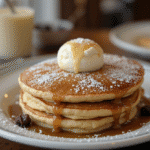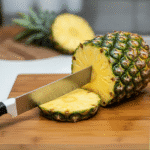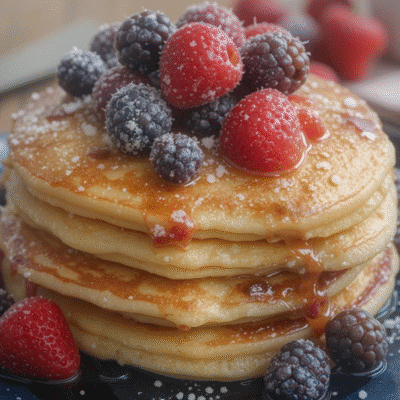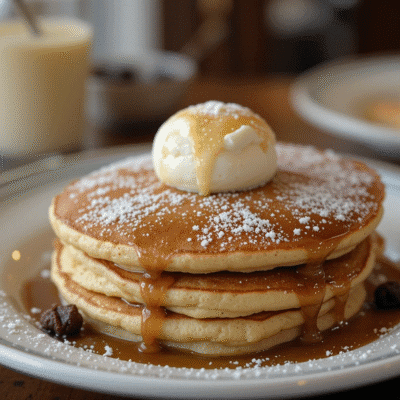There’s something magical about the process of making bread at home. The simple combination of flour, water, yeast, and salt transforms into a fragrant loaf that fills your home with warmth and satisfaction. Bread making is more than just a skill it’s an art rooted in history and tradition, with a resurgence in popularity among home bakers and food enthusiasts.
If you’ve been thinking about trying your hand at creating a loaf from scratch, you’re about to learn everything you need to get started. From its health benefits to troubleshooting common pitfalls, we’ll guide you step by step through the rewarding world of bread making.

The Health Benefits of Homemade Bread
Homemade bread isn’t just about the taste, though it’s miles ahead of anything you’ll find at the store. It’s also packed with benefits that are better for your body and mind.
- Nutritional Control: With homemade bread, you control what goes into your loaf. No preservatives, extra sugar, or unnecessary additives—just wholesome ingredients.
- Healthier Alternatives: You can experiment with whole-grain flours, reduce the sodium content, or add nutrient-packed seeds for a fiber-rich treat.
- Freshness: Store-bought bread is often loaded with chemicals to extend shelf life. Homemade bread is fresh, natural, and made to enjoy at its peak.
It’s a delicious, health-conscious choice that’s tailor-made for you and your family.
Essential Ingredients & Their Roles
Proper bread making starts with understanding its fundamental ingredients and their roles in crafting a perfect loaf.
- Flour: This is the foundation! All-purpose flour, bread flour, whole wheat, or even spelt flour determines texture, flavor, and structure.
- Yeast: The rising agent, whether it’s active dry, instant yeast, or sourdough starter. Yeast creates the light and airy crumb you love.
- Water: Hydrates the dough and activates the gluten formation needed for structure.
- Salt: Enhances flavor and controls yeast activity so the dough doesn’t overproof.
- Optional Add-Ins: These can range from olive oil for a softer crumb to honey for a touch of sweetness—or seeds and nuts for added crunch.
These simple ingredients combine into something truly special when handled just right.
The Bread Making Process, Step by Step
Follow this beginner-friendly guide to create your very first loaf of bread.
1. Mixing the Dough
Combine flour, yeast, salt, and water in a mixing bowl. Stir until a shaggy dough forms. Knead the dough by hand or in a stand mixer for about 8-10 minutes until it’s smooth and elastic.
2. The First Rise (Bulk Fermentation)
Cover the dough with a damp towel or plastic wrap and leave it to rise in a warm spot until it doubles in size. This typically takes 1-2 hours.
3. Shaping
Gently deflate the dough and shape it into your preferred loaf or roll. Place it on a baking sheet or in a loaf pan.
4. The Second Rise (Proofing)
Cover again and allow the shaped dough to rest and rise for another 30-60 minutes.
5. Baking
Preheat your oven to 375°F (190°C). Bake the bread for 25-35 minutes, until it’s golden brown and sounds hollow when tapped on the bottom.
6. Cooling
Resist the temptation to slice immediately! Allow the bread to cool completely on a wire rack. This final step ensures the crumb sets properly.

Troubleshooting Common Issues
Every baker encounters hiccups along the way. Here are fixes for some common problems:
- Dense Loaves: Check your kneading time—it might not be long enough. Also, ensure your yeast is active and fresh.
- Overproofing: If your dough collapses, reduce proofing time in your next attempt.
- Uneven Crusts: This could be due to inadequate shaping or an oven that’s not fully preheated.
These tips will help you troubleshoot and refine your technique for delicious results.
Variations and Enhancements
Once you’ve mastered the basics, it’s time to experiment with flavors and textures.
- Add Flavor: Mix in herbs like rosemary or thyme, or add sweet ingredients like dried fruits and chocolate chips.
- Artisanal Touch: Use different flours like rye or spelt for a rustic loaf.
- Gluten-Free Alternatives: Use gluten-free flours like almond or oat flour with a dedicated recipe.
The possibilities are endless—you can create a variation to suit any craving!
Tools of the Trade
While bread making doesn’t require fancy tools, these can make your experience more enjoyable and successful:
- Mixing Bowls
- Bench Scraper
- Rolling Pin (optional)
- Dough Whisk
- Kitchen Scale (for precise measurements)
- Proofing Basket (for classic round boules)
- A Dutch Oven (for bakery-quality crusts)
Invest in these essentials to elevate your bread-baking game.
For more articles Foods and Drinks click here
Discover the Joy of Creating Bread at Home
Making bread at home is more than a culinary achievement—it’s a satisfying way to explore your creativity while connecting with a centuries-old tradition. The best part? Sharing your bakes with family and friends turns a simple loaf into something truly special.
Are you ready to start your bread-making adventure? Tell us about your first loaf in the comments below! For more recipes, tips, and techniques to elevate your baking skills, subscribe to our newsletter today.











